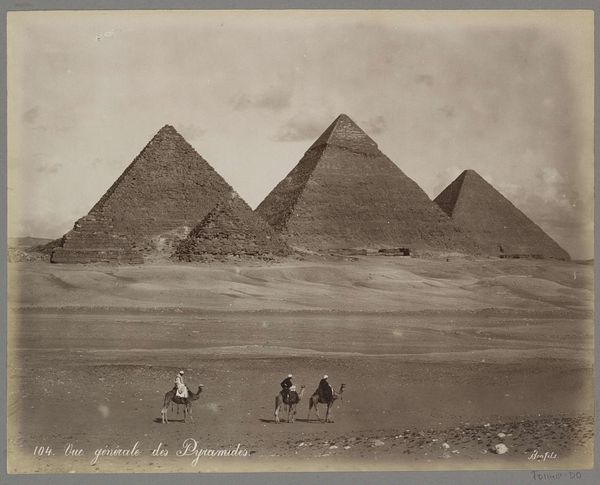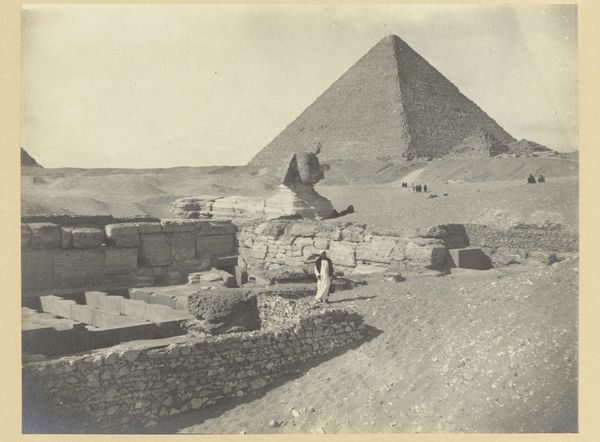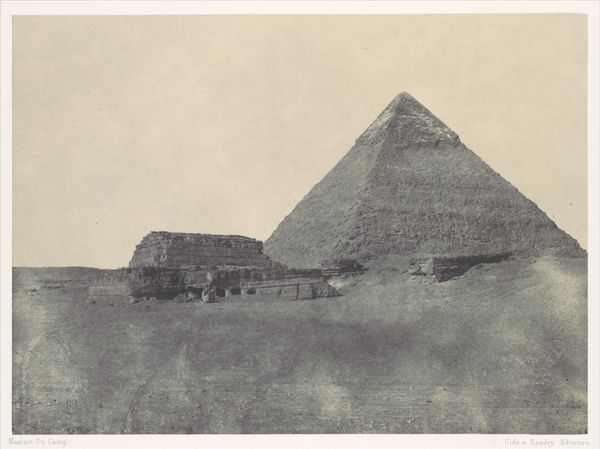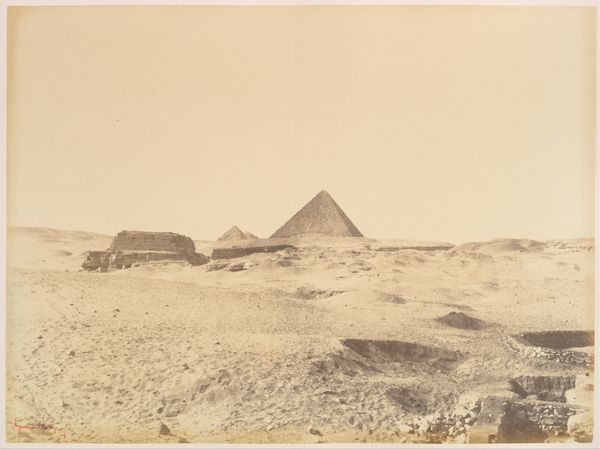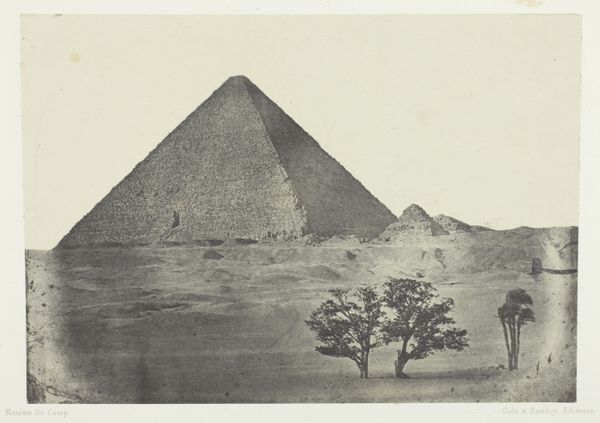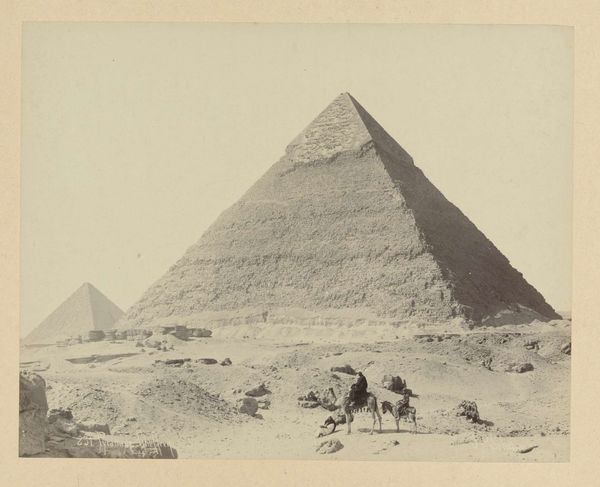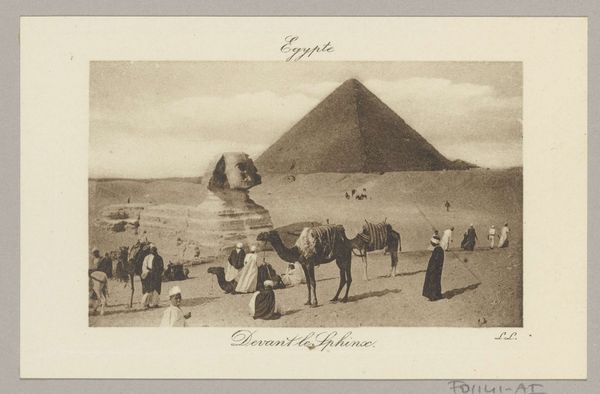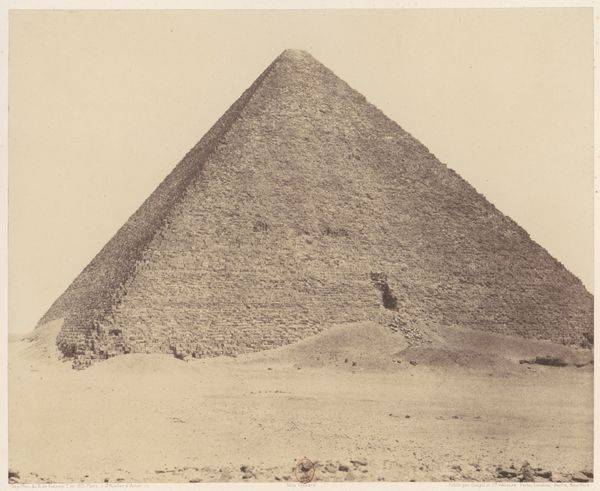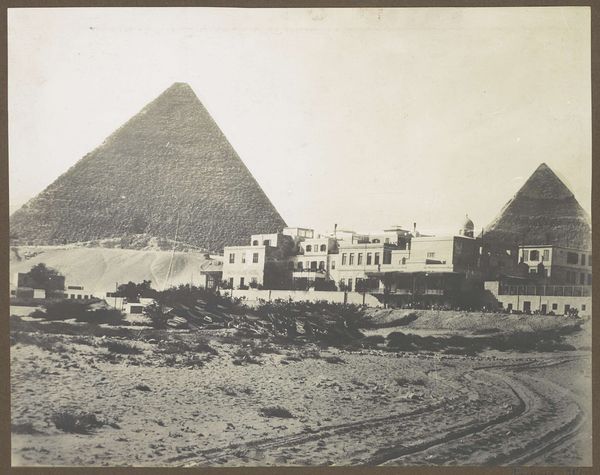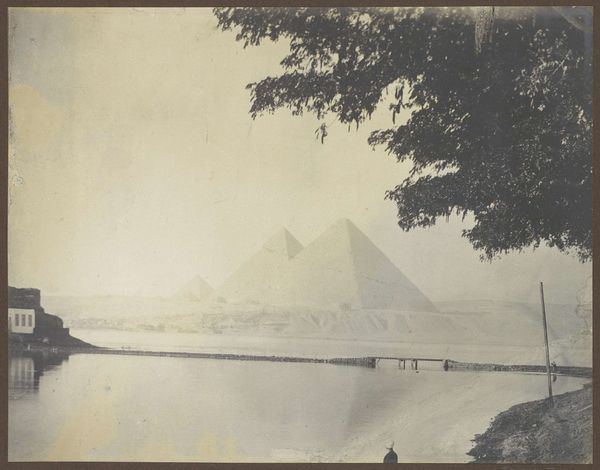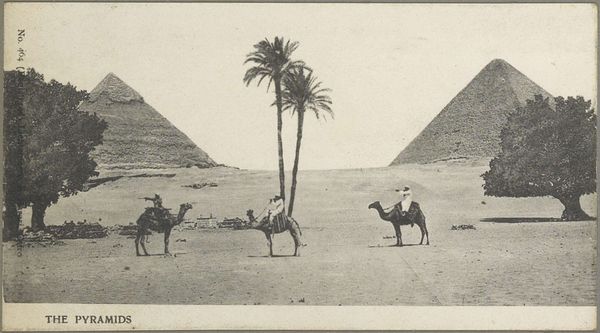
Herder met kudde op de oever van de Nijl, op de achtergrond de piramide van Cheops c. 1900 - 1910
0:00
0:00
mrldebruyn
Rijksmuseum
photography, gelatin-silver-print
#
narrative-art
#
landscape
#
ancient-egyptian-art
#
archive photography
#
street-photography
#
photography
#
historical photography
#
ancient-mediterranean
#
gelatin-silver-print
#
realism
Dimensions: height 231 mm, width 300 mm, height 469 mm, width 558 mm
Copyright: Rijks Museum: Open Domain
Curator: Mr. L. de Bruyn took this photograph, titled "Herder met kudde op de oever van de Nijl, op de achtergrond de piramide van Cheops," around 1900-1910. It’s a gelatin-silver print currently held here at the Rijksmuseum. Editor: The tones in this piece evoke such a dreamlike quality, and honestly, a slight melancholia. The world feels so distant, so filtered. Like a memory half-forgotten. Curator: It is quite evocative, and its realism provides insights into the period, wouldn’t you agree? Think of how photography was used then—primarily for documentation, for a supposed objective record. Yet even here, we sense a subjective gaze framing the scene. What purpose did these types of images serve during this time period, and whom were they meant for? Were they attempting to reinforce colonial power dynamics through imagery, for instance? Editor: Absolutely, these visual records also captured a rapidly changing world—people seeking to fix a certain era through imagery. As to this particular shot... I'm really drawn to the pyramid. Not as a monument, but as a hazy form. It's grounding, it speaks to the deep past, yet it almost disappears into the distance like mist. Curator: Yes! De Bruyn chose to incorporate it as only one aspect of the landscape. This photo shows us not only monuments and vast empty stretches, but that there are everyday realities occurring alongside those very structures, such as shepherds attending to their flock. That gives it power. Editor: It makes one consider who has been remembered by history versus those simply living, or existing alongside historical structures and stories. All the unrecorded moments! So, in some ways, this photography serves as a memorial. I'm intrigued how that tension manifests between ancient history and ephemeral modern moments. Curator: I find myself dwelling on the medium. Gelatin-silver print provided sharpness and tonal range unavailable beforehand, revolutionizing photographic clarity. One imagines this image carefully printed, considered. Photography also evolved over time, influenced by movements like Pictorialism and social change. This photographer's choices echo far beyond the surface level. Editor: I keep coming back to that pyramid as a sign of the passage of time. I suppose photography as an art is equally fascinating because of its strange interaction with both reality and its documentation. Like it reveals and hides in equal measure.
Comments
No comments
Be the first to comment and join the conversation on the ultimate creative platform.
